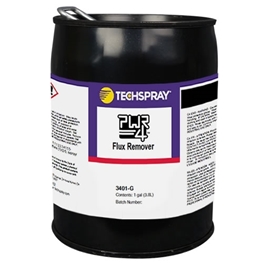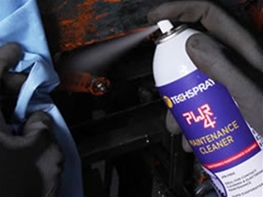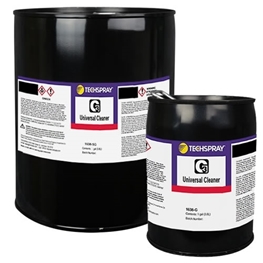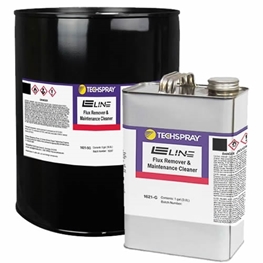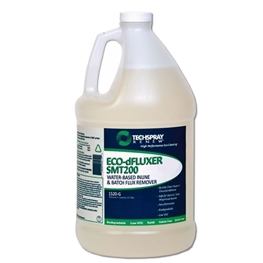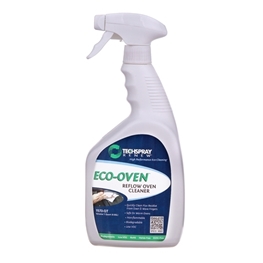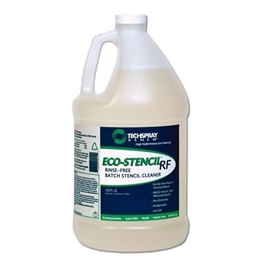다용도 초음파 세척제 솔루션
Techspray는 다양한 솔벤트와 수성 초음파 세척제를 제공하고 있습니다. 전자제품 세척, 산업 세척, 기계 등 다양한 용도에 적합한 초음파 세척액이나 산업용 세정제 등 효율적인 초음파 세척제를 설계하였습니다.
- Techspray Renew - 영의 GWP와 저 VOC의 수성 플럭스 제거제.
- PWR-4 - 비용 효과적, 불연성, 저독성이므로 n-propyl bromide (nPB)와 기타 산업 독성 용제를 대체하는 제거제로 이상적입니다.
- G3 - 다양한 오염물에 효과적인 가장 잘 팔리는 불연성 용제입니다.
- 정밀-V - AK225를 대체하는 불연성 대체품으로 항공, 항공우주, 의료 및 군사 용도에 이상적입니다.
초음파 세척에서 안전은 최우선 순위입니다.
- 불연성 - 불연성 세척제가 일반적으로 가장 안전한 선택입니다. 그렇지 않으면 환기장치가 방폭성이고, 인화성 연기가 쌓여 위험해지지 않을 정도여야 합니다. 또한, 용해성을 높이기 위해 가열된 초음파 욕조에서 세척하는 것이 일반적이므로 불연성 세척제가 더욱 중요해집니다. Techspray는 세가지 불연성 용제 G3, PWR-4, Precision-V를 제공하고 있습니다.
- 독성 - TCE, nPB, Perc 및 Methylene Chloride와 같은 가장 일반적인 4가지 산업용 용제보다 훨씬 더 안전하고 가장 어려운 그리스와 플럭스를 빠르게 제거하는 혁신적인 Techspray 용제가 있습니다. Techspray 세척제에는 이러한 독성이 높은 용제가 들어 있지 않으며, PWR-4는 대체품으로 특별히 설계되었습니다.
자주 묻는 질문
오염물에 적합한 용해성이 있으면 음파 교반이 덜 필요합니다. 이렇게 되면 더 낮은 온도, 더 낮은 진폭에서 세척 과정이 더 빨라지면서 민감한 구성품 손상 가능성이 감소할 수 있습니다. 다음은 옵션을 검토할 때 살펴보아야 하는 특성입니다. 1) 용해성 - 오염물을 분해 및 용해하는 세척제의 성능. 용해성을 빨리 평가하려면 오염된 부품에 직접 세척제 한 방울을 떨어트리고 몇 분 동안 그대로 두어 건조시킵니다. 이 간단한 테스트로 화학반응이 오염물에 적합한지 알아낼 수 있습니다. 세척제가 오염물 표면에만 있고 적셔서 분해시키지 않는다면 다음 세척제로 바꿉니다. 2) 표면 장력 - 높이가 낮은 구성품 아래와 같은 조밀한 틈새에 용제가 얼마나 잘 들어가는지 영향을 줍니다. 3) 밀도 - 밀도는 액체를 통한 음파의 이동 속도와 캐비테이션 정도에 미미한 영향을 끼칠 수 있습니다. 밀도가 더 높은 물질은 이동하는데 더 많은 에너지가 필요하므로 부품에 도달할 때쯤에 에너지와 세척력이 고갈될 수 있습니다.
초음파 세척 성능을 높이기 위해 여러 가지 조정을 할 수 있습니다. 1) 주파수 - 이것은 1초 당 파 횟수이며, 얼마나 "조밀한" 파형인지 나타냅니다. 낮은 주파수는 더 강하게 세척하게 되지만 민감한 구성품 표면이 손상될 가능성이 커집니다. 고주파 음파는 더 조밀한 영역으로 들어갈 수 있습니다. 메가-소닉 범위에서 400 kHz 이상이 되면 기포 붕괴는 더 작은 간격 때문에 강렬하지는 않으므로 조밀한 영역에서 세척이 종종 덜 효과적입니다. 2) 진폭 - 파 높이 또는 음량을 나타냅니다. 진폭이 클수록 일반적으로 세척 효과를 높이지만 또한 민감한 표면이나 구성품이 손상될 수 있습니다. 3) 온도 - 상승 온도는 일반적으로 용제의 세척력을 향상시킵니다. 더 높은 온도 또한 세척제의 점성도를 줄이고, 표면 장력이 높여 조밀한 영역에 들어갈 수 있습니다. 용제 온도가 오염물 용해점 이상이 되면 세척력이 상당히 높아집니다. 4) 시간 - 세척 주기 시간을 높여 더 낮은 최적의 용해성에 대해 보상할 수 있습니다. 5) 화학반응 - 오염물에 적합한 용해성이 있으면 음파 교반이 덜 필요합니다. 이렇게 되면 더 낮은 온도, 더 낮은 진폭에서 세척 과정이 더 빨라지면서 민감한 구성품 손상 가능성이 감소할 수 있습니다.
초음파 세척 과정에서 장비를 사용하여 일반적으로 20-40 kHZ 사이에서 초음파를 전달합니다. 트랜스듀서는 트랜스듀서에서부터 부품으로 전달 매체로 작용하는 액체 세척제를 통해 음파를 전송합니다. 매우 높은 주파수에서 음파는 부품 표면으로 전달되어 음향 흐름이라고 하는 프로세스를 통해 교반을 일으킵니다. 주파수가 감소하면서 액체 내에 캐비테이션을 일으킵니다. 이 빈 공간은 빠르게 붕괴되면서 열과 충격파를 일으켜 세척 과정에서 교반을 발생시킵니다.



